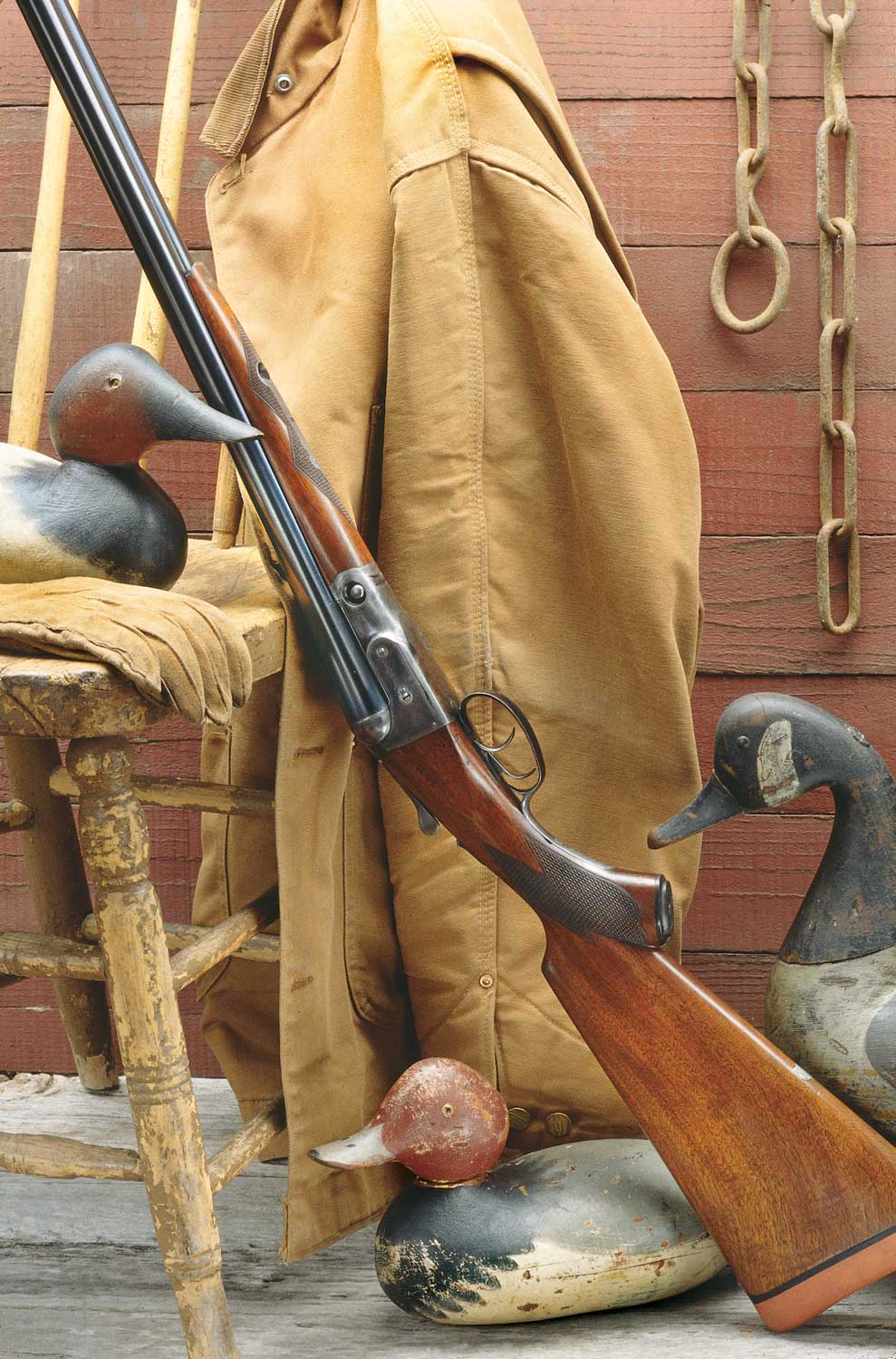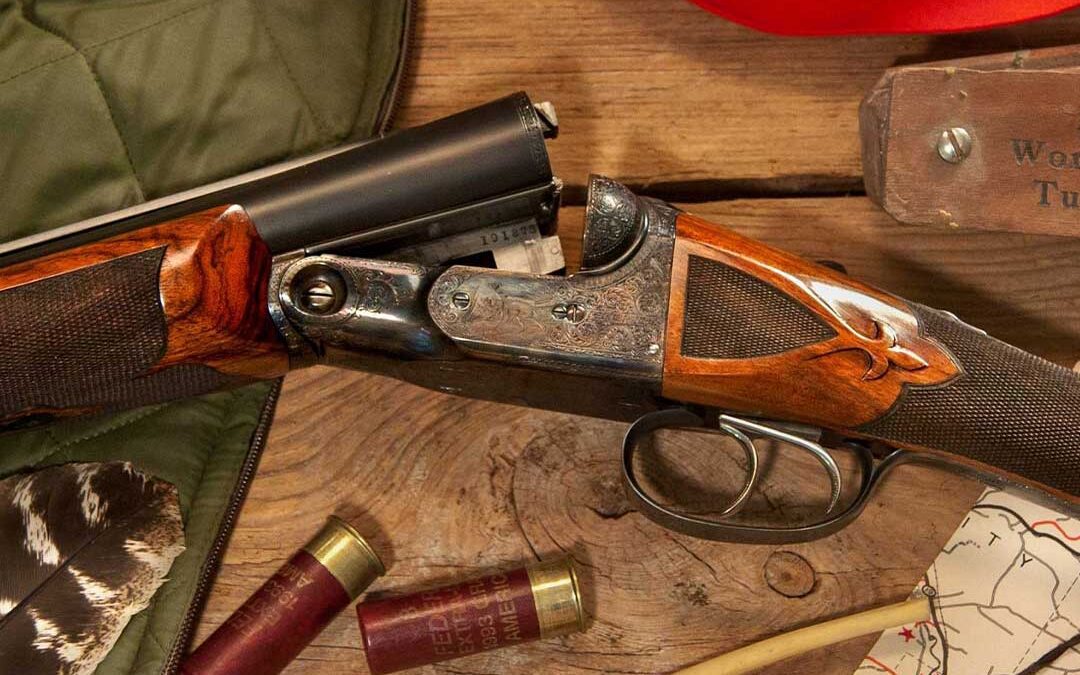I guess I should tell you up front that I have some misgivings about this column. Not because it’s bad stuff, but because I have a lot of friends who may not be too happy about it. You see, I make an annual pilgrimage to the Southern Side-by-Side Championship in Sanford North Carolina, and I usually compete in the Parker vs. L.C. Smith Challenge. I was on the very first “Elsie” team, which I think is the only time that we ever won, and I really hope that my Smith-toting friends don’t read this, ’cause I’ll probably be banned from the team for life!
Despite the fact that I habitually compete on the Smith team, I’ve always been a fan of the Parker gun. I’ve owned a bunch of them over the years, and still own a couple. I guess that I’ve shot more birds with Parkers than all other shotguns combined. I’ve also owned every early American side-by-side that I can think of, and most of the well-known side-bys in the world. That doesn’t make me an “expert” on anything. It just means that I’ve had enough exposure to provide a reasonable basis for comparison.

Parker VH Grade, 12-gauge – Photography by William Headrick
The Parker gun is an icon of American gunmaking. Certainly, no double from anywhere has a greater mystique, and several generations of American shooters have now grown up knowing the Parker name and associating it with quality. Moreover, many enthusiasts feel that the Parker is the very best of the American-made double guns. Without question it has the best-known name.
In the southeastern corner of the country where I live, it’s a given that if you show up at a quail plantation or a dove shoot with a nice side-by-side, you will be asked if it’s a Parker. The enquirer will not likely come up with any of the multitude of other fine American or English or Italian names. You will be asked if it’s a Parker. I have no idea how many times I have been asked the question about my lovely vintage Purdey!
Parker built its first guns in the mid-1800s, but its reputation was made with its hammerless double introduced in 1889. There were a number of improvements over the years, but all the variations were very fine guns. In 1937 Remington bought the company and continued to deliver guns sporadically until shortly after the Second World War. The lore of the Parker is such that it spawned the Winchester-produced “Parker Reproduction” in the 1980s and Remington is now selling a high grade redux of its own.
Was the Parker the best of the bunch? The answer to that question is yes. And no.
Parker, Fox, Ithaca, L.C. Smith and several others produced extremely fine guns. Some of the best-grade Lefevers were nothing less than exquisite, and L.C. Smith’s top-tier guns were probably as good as anything made in the world at the time. If you are talking about absolute, top-of the-line guns, there is no clear winner. They were all very, very good.
On the other hand, Parker’s reputation was earned with their low to mid-grade shotguns. After all, these were the guns that most people saw.
Whenever the question comes up, I recommend that the person making the inquiry answer the question for himself, rather than relying on my opinion. Fortunately, there is an easy way to do this. And you don’t have to go any farther than a shop that specializes in vintage or high-quality guns. Better, yet, go to one of the many vintage or side-by–side shows in the country. When you get there, ask to see a high-grade Parker in good condition and a field-grade Parker, say a good VHE, in equal condition.
If you look closely, you’ll see little difference in the quality of the basic gun and the quality of the high-grade. The showpiece will have fancier wood and more engraving, but the gun itself is the same. They’ll both be solid and well-made. They will both have outstanding wood-to-metal and metal–to-metal fit. They will have the same near-unbreakable mechanism. They will both open and close with the smoothness of old silk and both will lock like the proverbial bank vault. If you focus on the bare gun and disregard embellishment, you will be amazed that anyone would even attempt to build a field-grade gun to the same standards as their top grade, but Parker did.
After you’ve done that, you should lay the high-grade aside and ask to see a vintage field-grade gun from any of Parker’s contemporaries. Any maker will do. When you compare the Parker to the other field-grade gun, you will know why Parker Bros, garnered the reputation that it did.
Today, we are accustomed to seeing very ordinary guns that have been “dolled up” with fancy wood and profuse engraving and sold as “fine” guns. Parker’s approach was exactly the opposite. Every gun they made was of high quality, regardless of grade. The higher-grade guns have nicer wood and engraving, but even the field grade guns were made to a very high standard. Even their “economy model,” the Trojan grade, was extremely well made. Homely, yes, but well made.
This little dissertation was sparked by a conversation that I had a while back. Some guy was grumbling that Parkers were nothing but overpriced collectors’ items. I really don’t agree. Yes, the asking prices for rare Parkers and small-bores get a little silly, but there is more to the story than that. A good condition field-to-mid-grade Parker with good stock dimensions and good barrels is a very fine investment that will serve you well and last long enough to do the same for your grandchildren.
Good doubles simply aren’t cheap, and if you start looking around, you will find that any double that’s as good as a good-condition Parker will probably cost even more.
If you decide to look for a “using grade” Parker, you can begin with a Trojan, which makes a great field gun. The VH or VHE is a step up and is the lowest grade that had the rounded action shoulders that we associate with the classic Parker profile. It will also have border engraving around the action. The “E” added to the designation simply means that it’s a VH grade gun with ejectors. The GH or GHE grade will display a little more engraving and slightly nicer wood.
If you want to go “whole hog” on a hunting gun, the DH or DHE is the way to go. Grades higher than D start to get into the category where they appeal to collectors and that’s reflected in their asking prices. A “D” will typically have very nice wood and the receiver will display almost complete coverage of very good “period” engraving. Make no mistake about it, the DHE is a very fine gun!
The grade is normally stamped on the water table, but if you decide to buy, take the time to learn all you can about the gun and get help from someone who is knowledgeable about Parkers. It may come as a surprise but there are a good many charlatans in the gun trade. All the rules about buying vintage guns apply. Be careful.
I own guns that cost more. But I don’t have any guns that are intrinsically better than “The Old Reliable.” With a little luck, I’ll see “Old Ruff” take to wing in October. Soon after, I’ll see some sharptails. And huns. And big old cock pheasants, too. When that’s all done, I’ll reacquaint myself with Mr. Bobwhite. And likely as not, I’ll be carrying a Parker.
Note: This article originally appeared in the 2012 September/October issue of Sporting Classics magazine.

